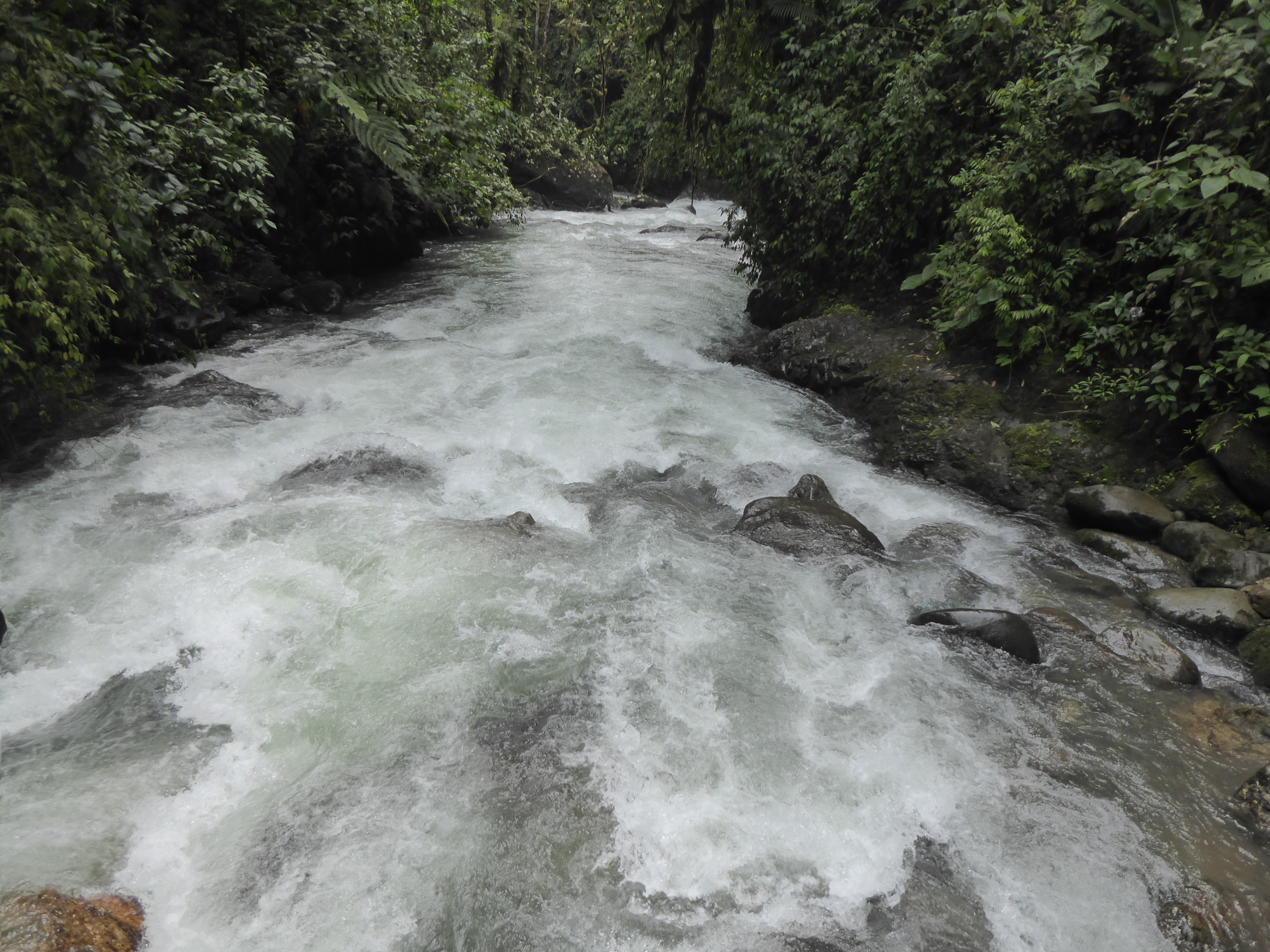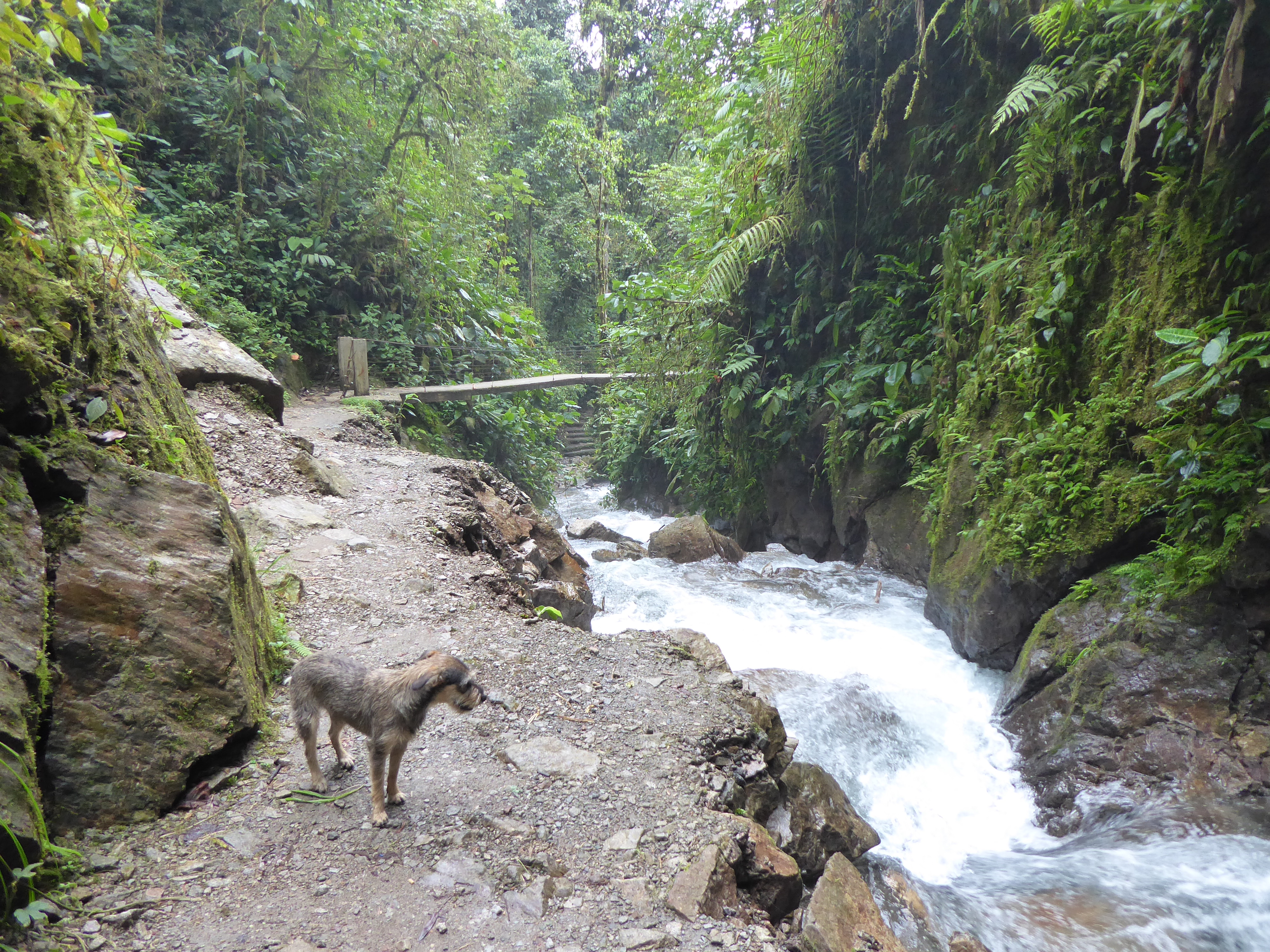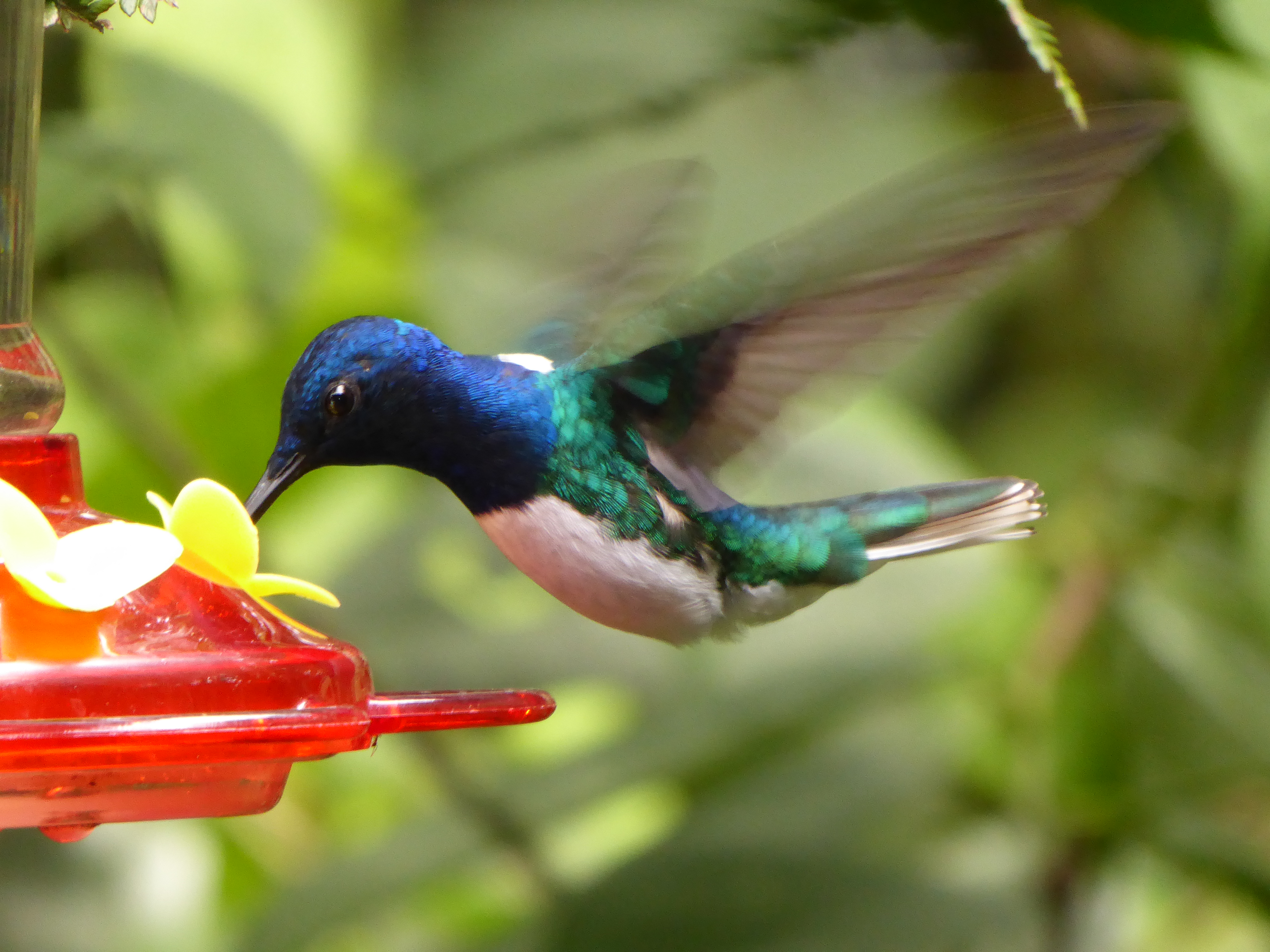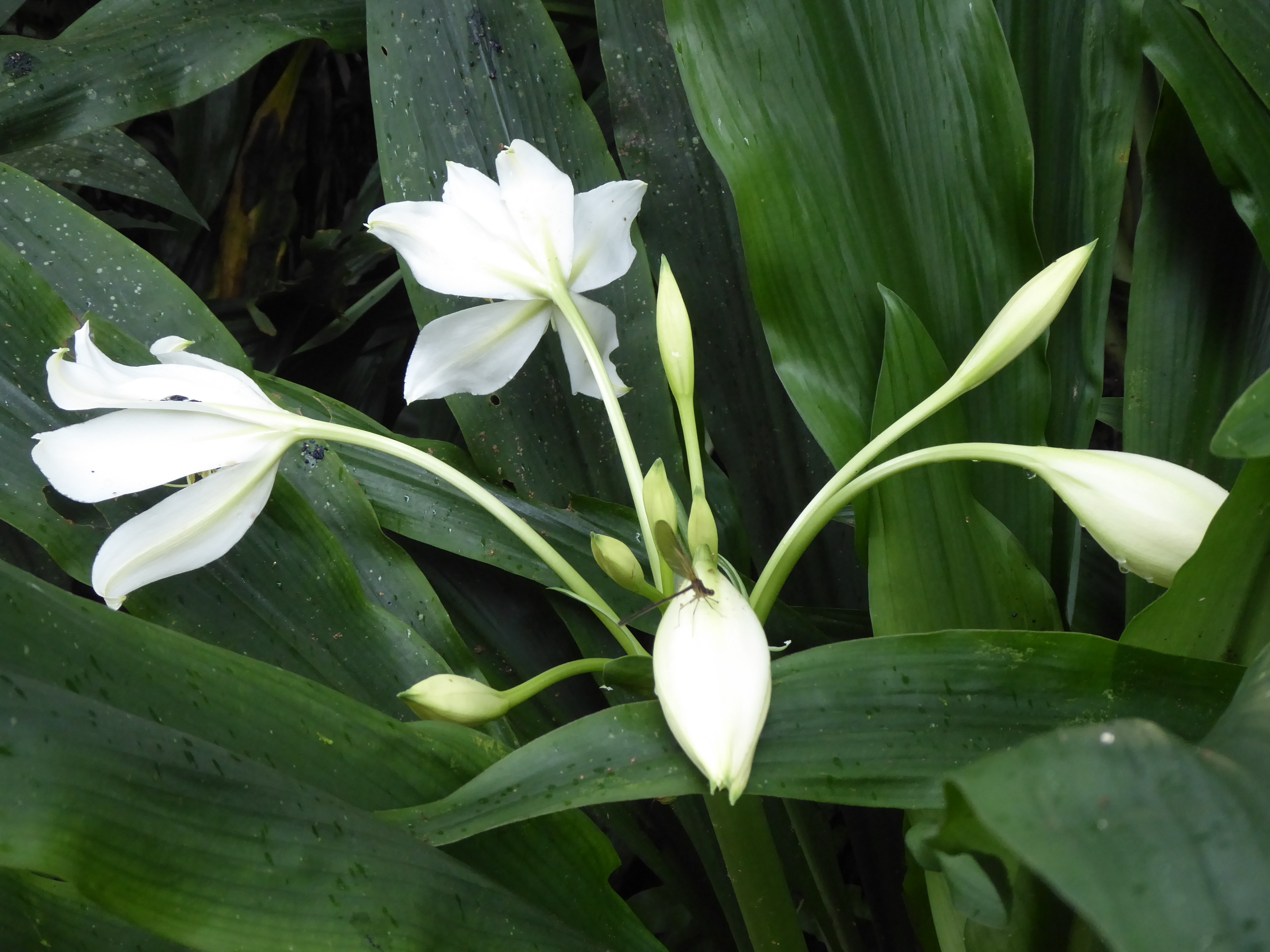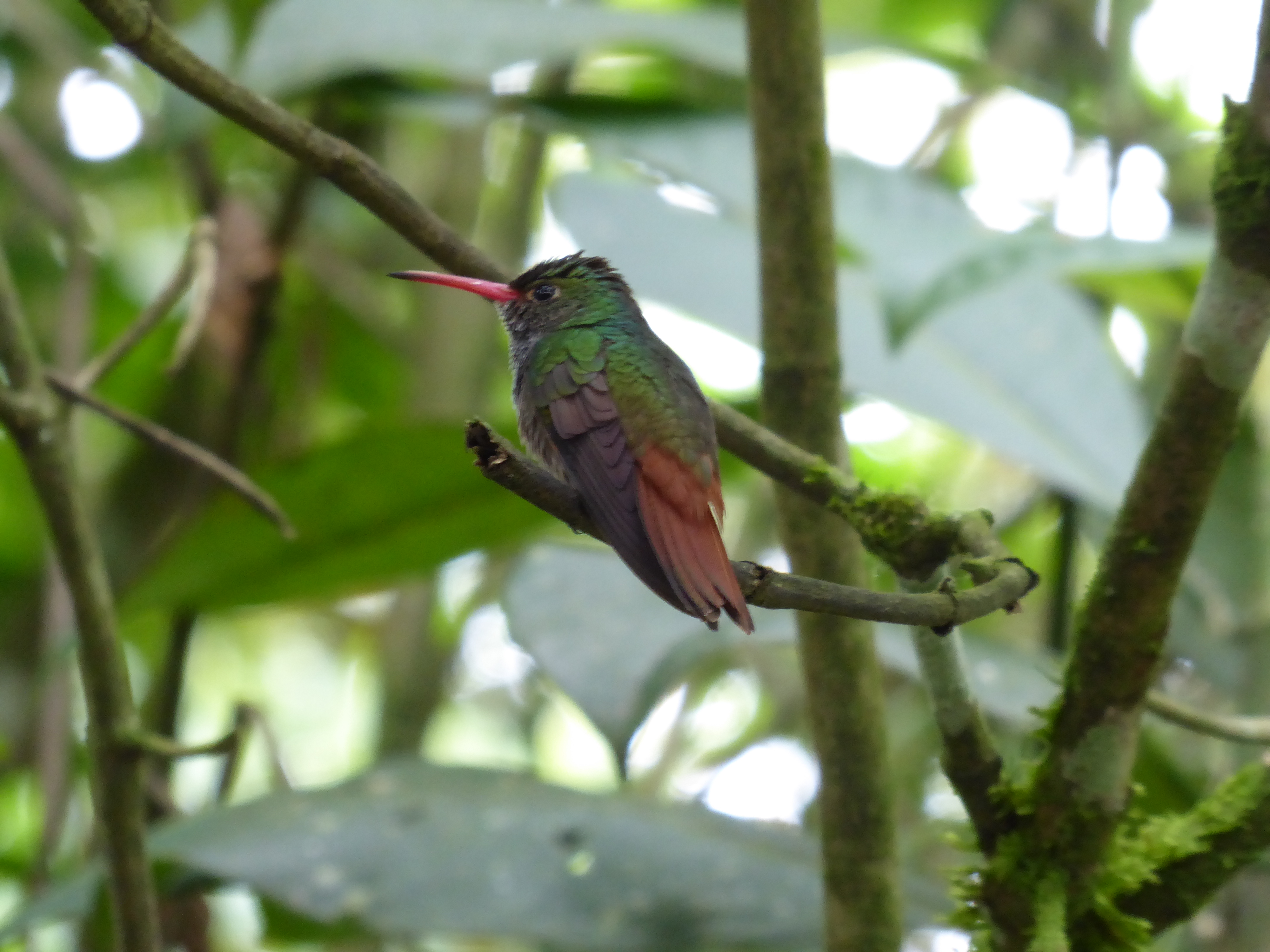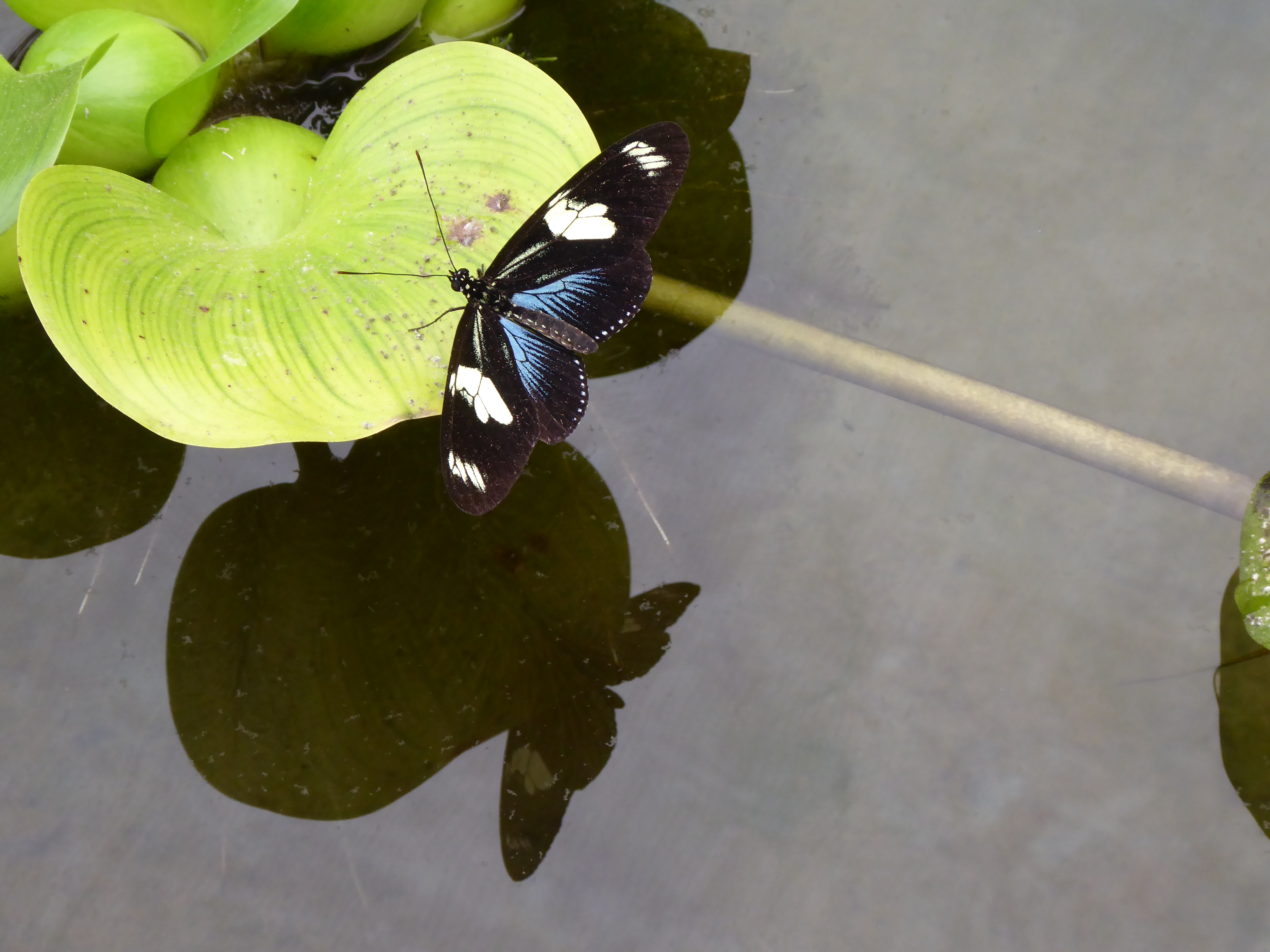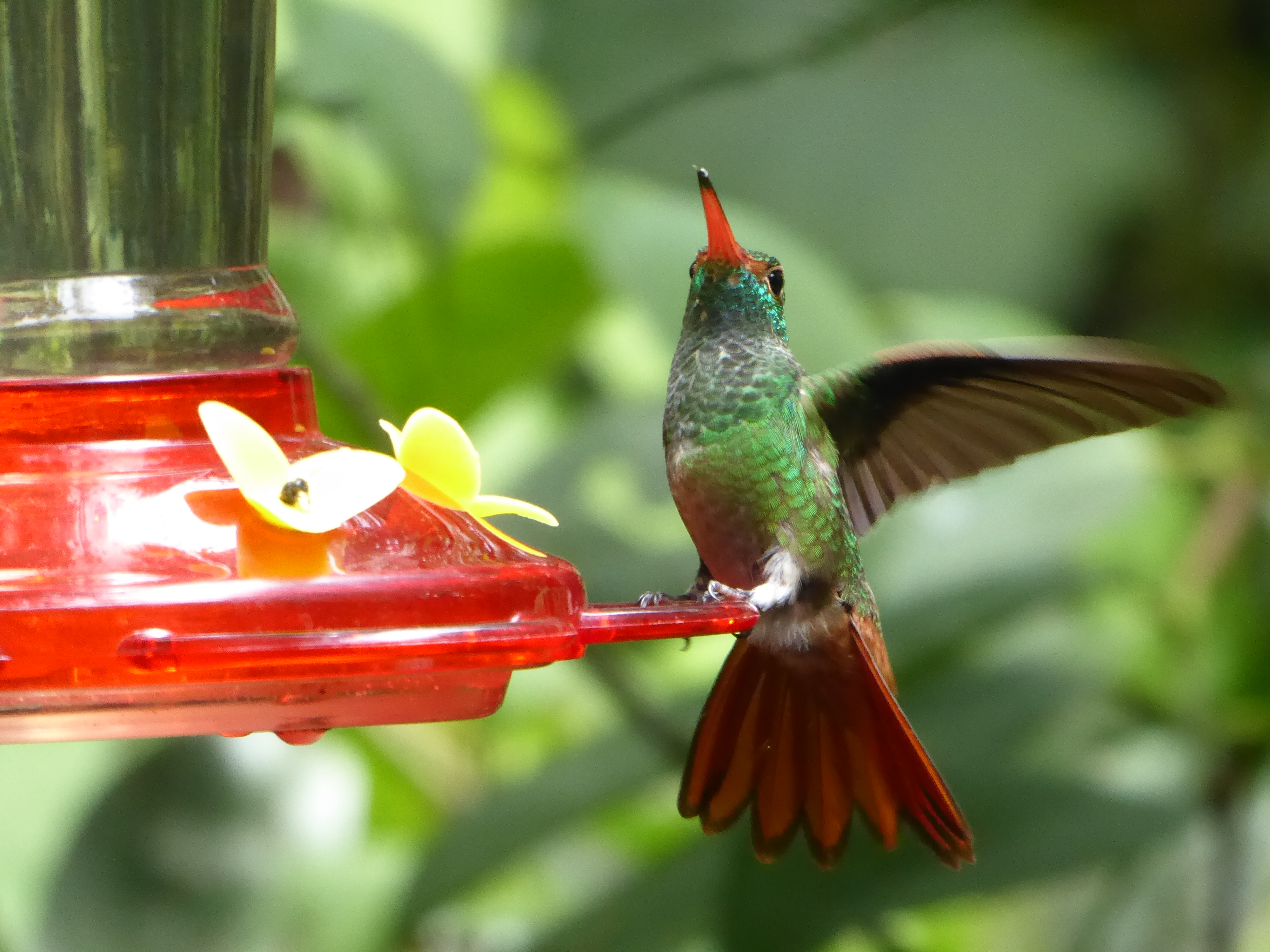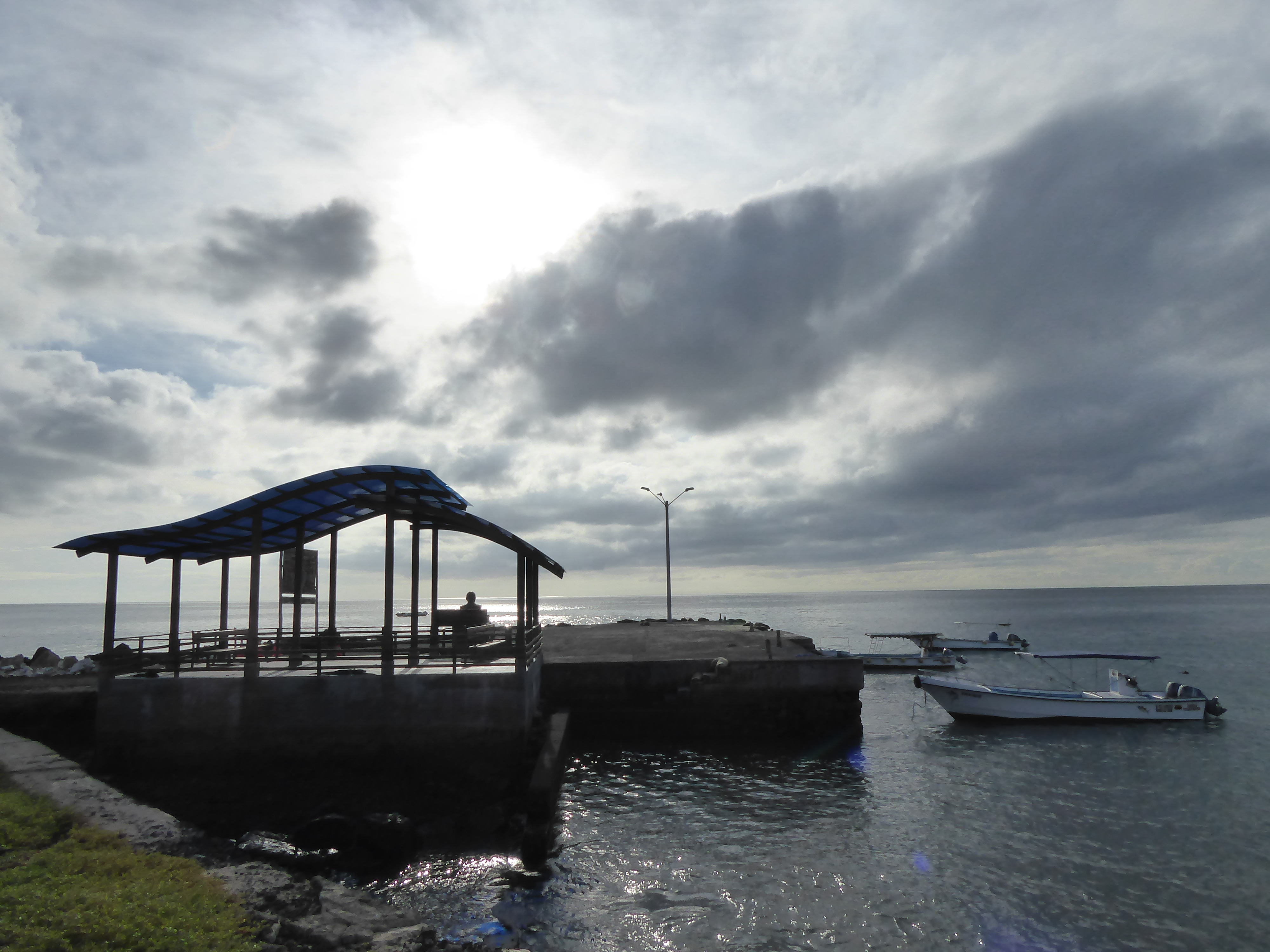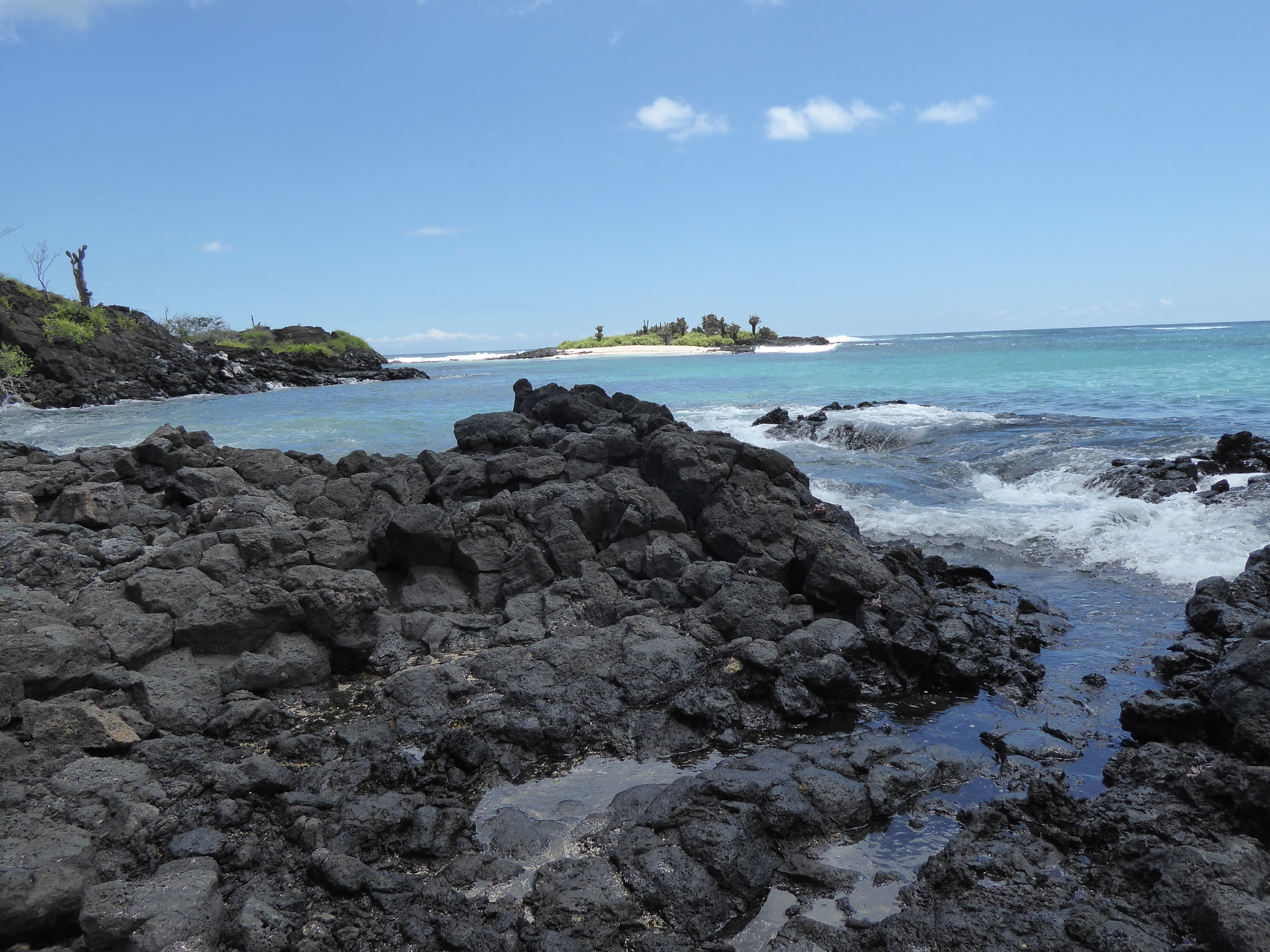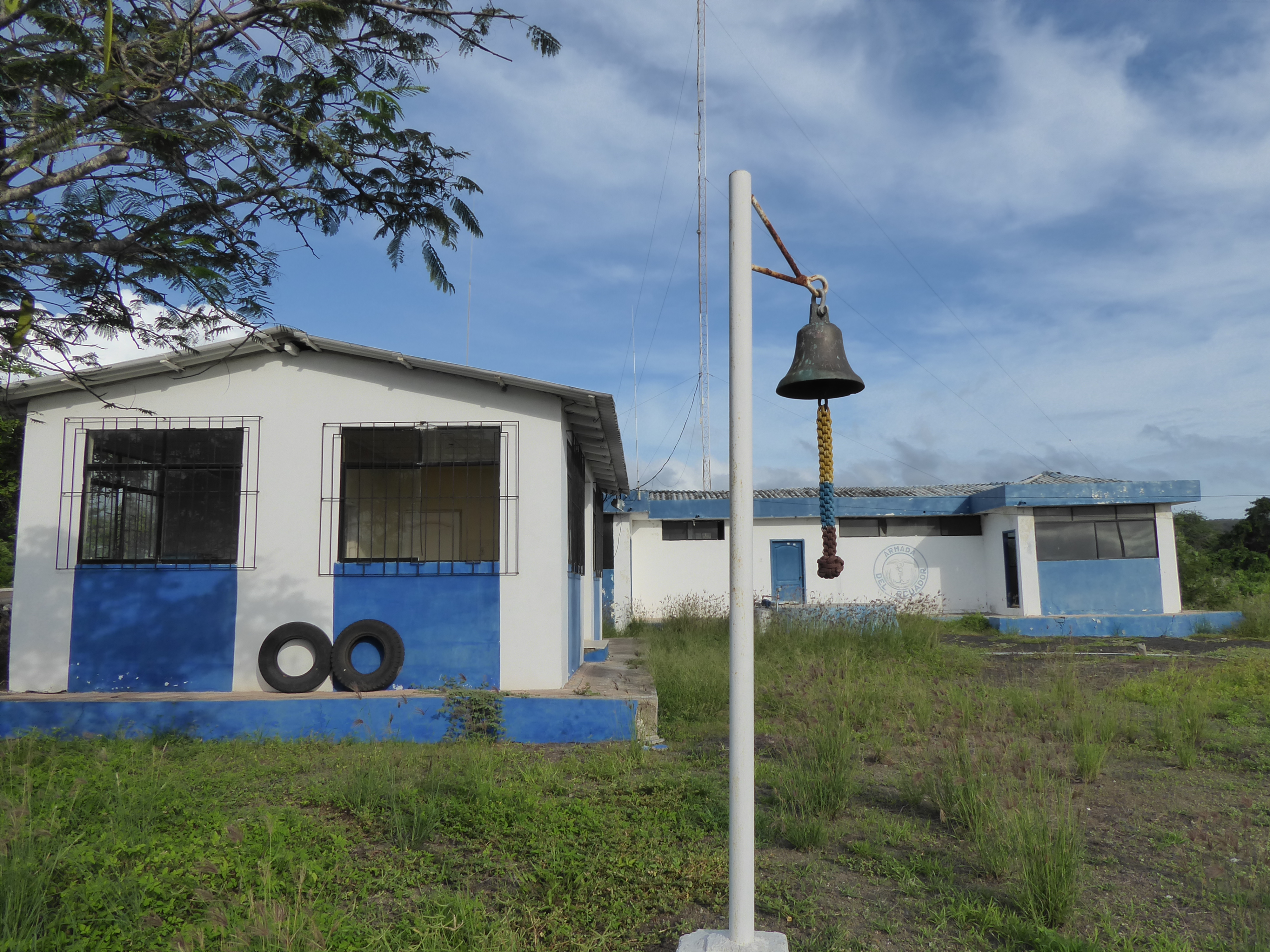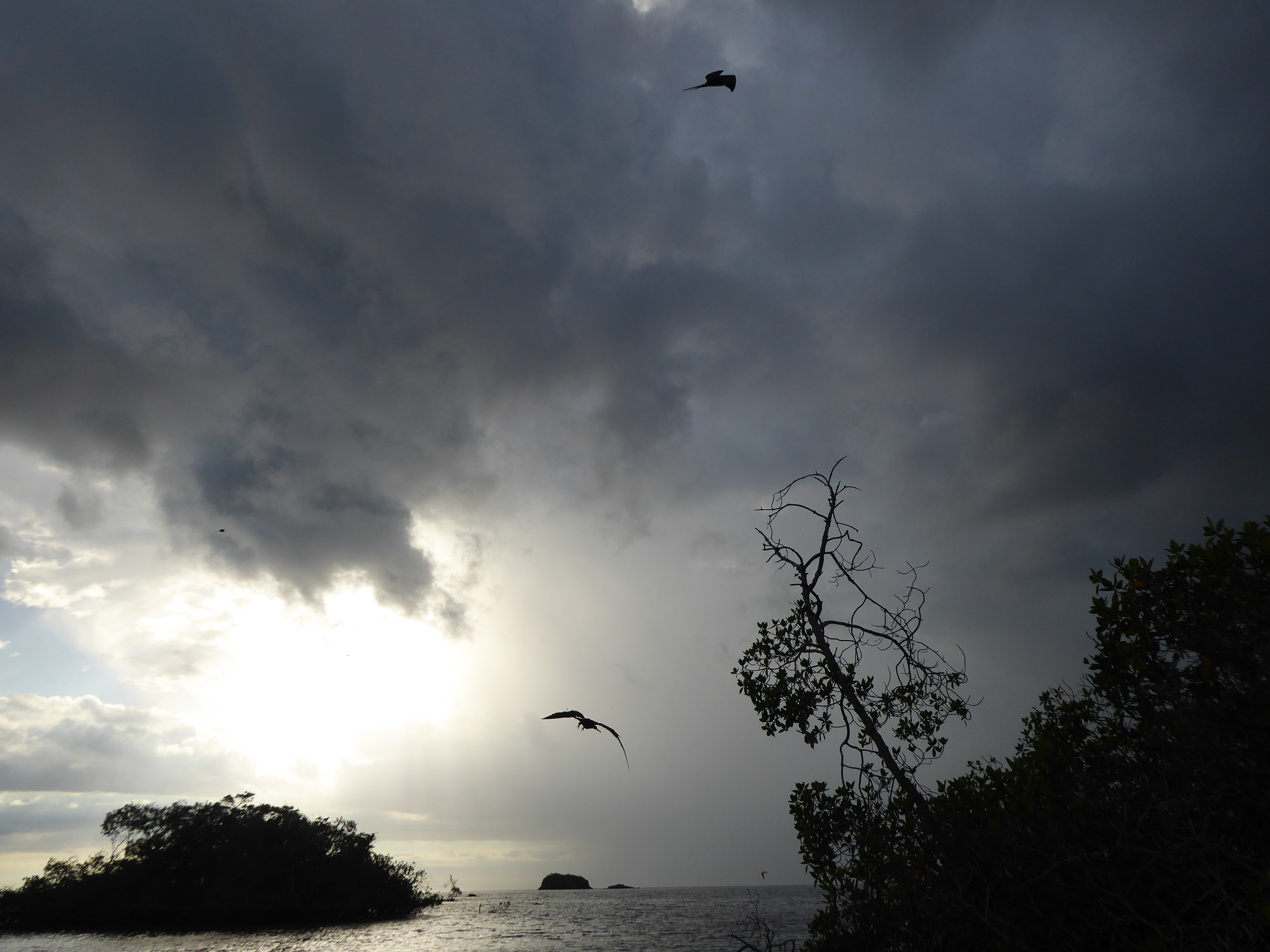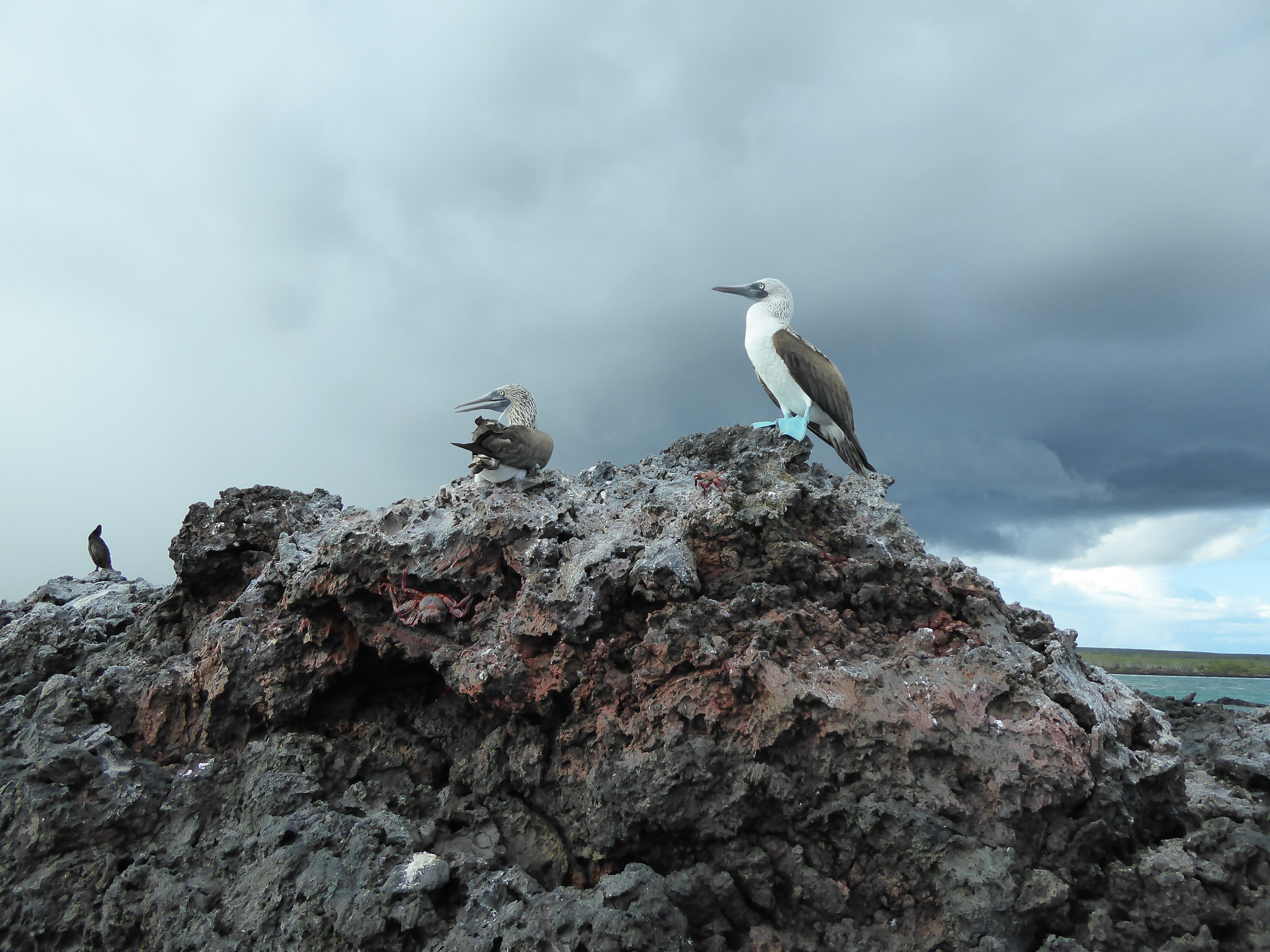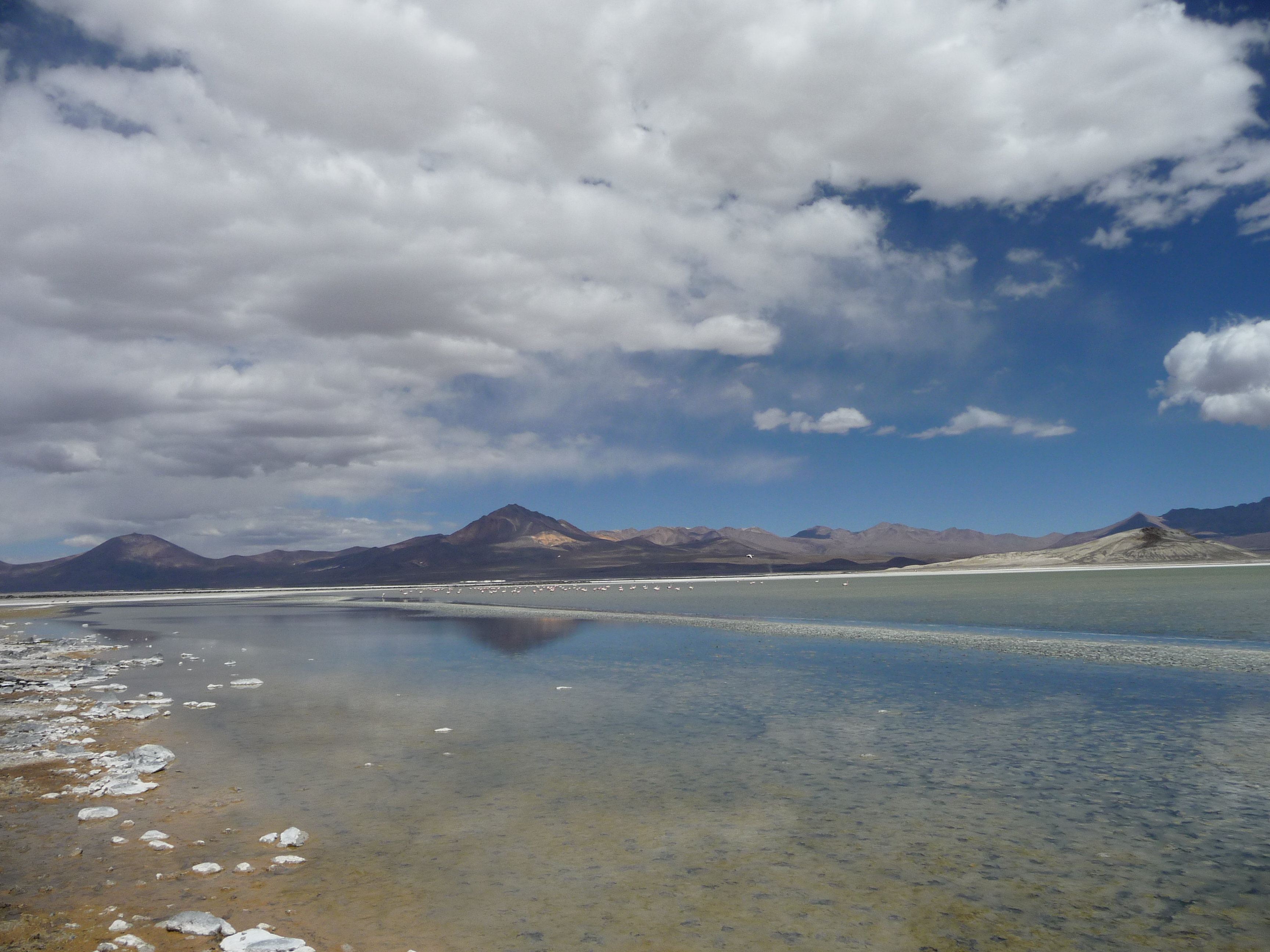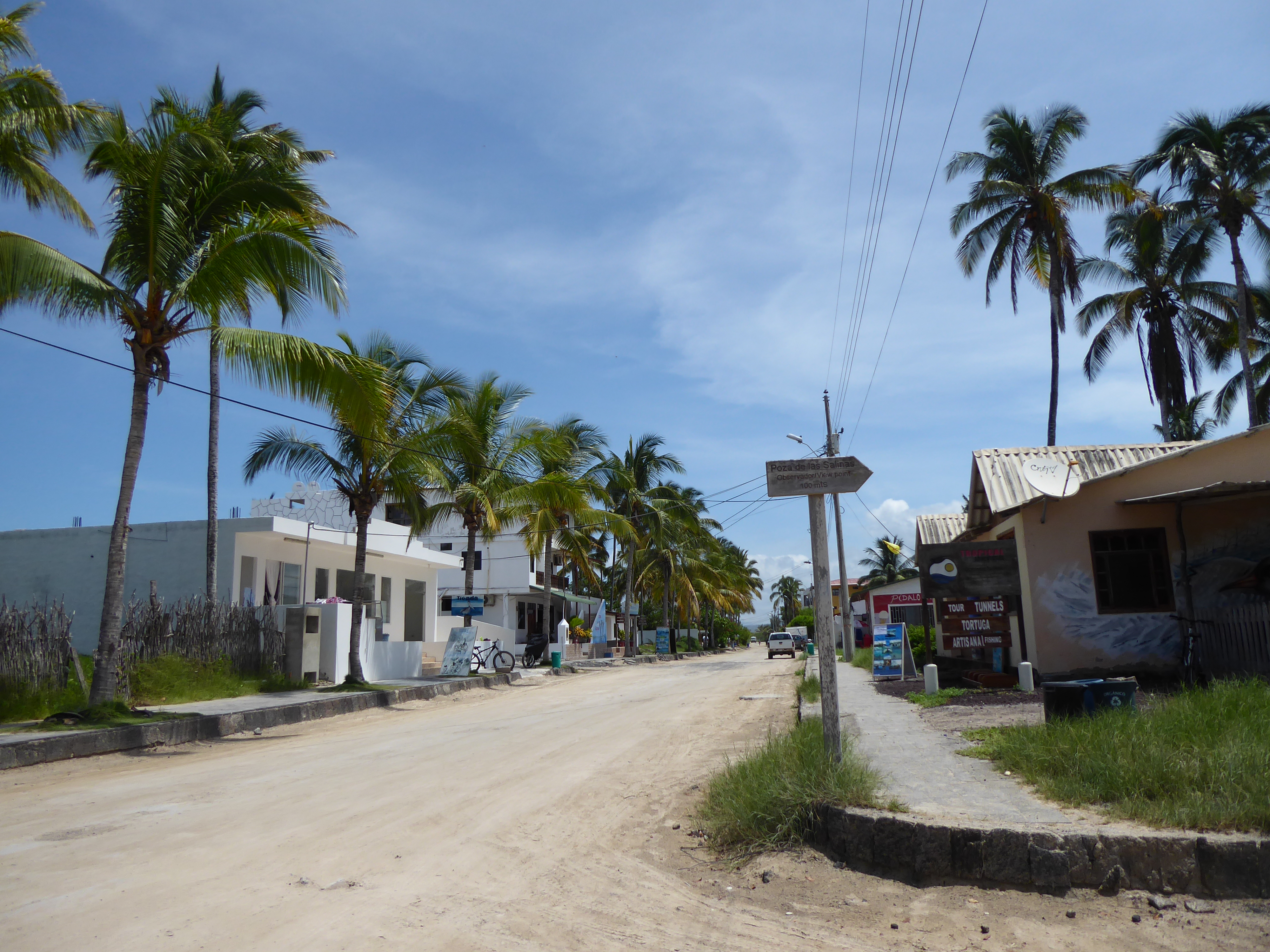 Arriving from Floreana to the pier on Isla Isabela, I was told it was either a 15 to 20 minute walk or a $1 taxi into the main town Puerto Villamil . Given the heat of the day and the sun’s rays that shine with the force of a laser, it was an easy choice.
Arriving from Floreana to the pier on Isla Isabela, I was told it was either a 15 to 20 minute walk or a $1 taxi into the main town Puerto Villamil . Given the heat of the day and the sun’s rays that shine with the force of a laser, it was an easy choice.
At the end of the pier was a man, perhaps 30, tall and slender, wearing a baseball cap, shorts, reflective sunglasses, and barefoot standing beside a, now for me, recognizable taxi-a white pick-up truck. “Taxi?” he asked. We confirmed the price and not knowing where I would be staying he offered to show me a place “clean and reasonable”. Two or three minutes later we arrived at a bland cement building painted pink. The owners came out and showed me a “clean and reasonable” charmless room for $30/night. I graciously declined. Carlos, the driver, was not discouraged and took me to another place with unfortunately an equal lack of appeal. He seemed genuinely content to take me to any number of places before I found what I was looking for. However, after another attempt, I thought it best to continue on my own. He let me off near a small cluster of hostals (small hotels). I gave him $1.50 for the fare and his time.
Planning to stay five nights I was hoping to find a sweet place, and with luck a balcony and view of the sea. It took me another few tries, but I found exactly what I was looking for. A top floor with large bedroom, wide windows with screens, balcony, large bathroom with a great shower, separate kitchen area-minus a stove, in a very pretty white stucco structure embellished with wood and full kitchen on the ground level. The view and sound of the sea, a few hundred feet away, was seen and heard from my balcony and a terrace just outside my door offered a view of a pond, on the other side, with flamingos. The room was $25/night.
Isabela is the largest island in the Galapagos and the population is roughly 1800 people, much more than Floreana’s roughly 150, yet Puerto Villamil remains peaceful and sleepy. Most of the hostals, shops, tourist agencies, and restaurants lie one block away and parallel to the beach-a gorgeous wide stretch of white sand and active surf. 
The owners of “my home” were Edith and Beto. Beto’s favorite hangout was his eponymous bar on the beach where he lazed in a hammock when he wasn’t stocking the refrigerator with beer: Pilsner (an Ecuadorean Schlitz of sorts) and Club (a tad tastier). They’d been living on the island for 30 years and converted their first building, which housed the bar, from a church. The bar was mostly frequented by young foreign tourists who smoked, drank the beer, and spent most of the time gliding their fingers along their phones. The music was equally foreign: reggae, blues, and soul.
Although there was an assortment of guided activities designed for tourists I opted for only one: snorkeling at los tuneles.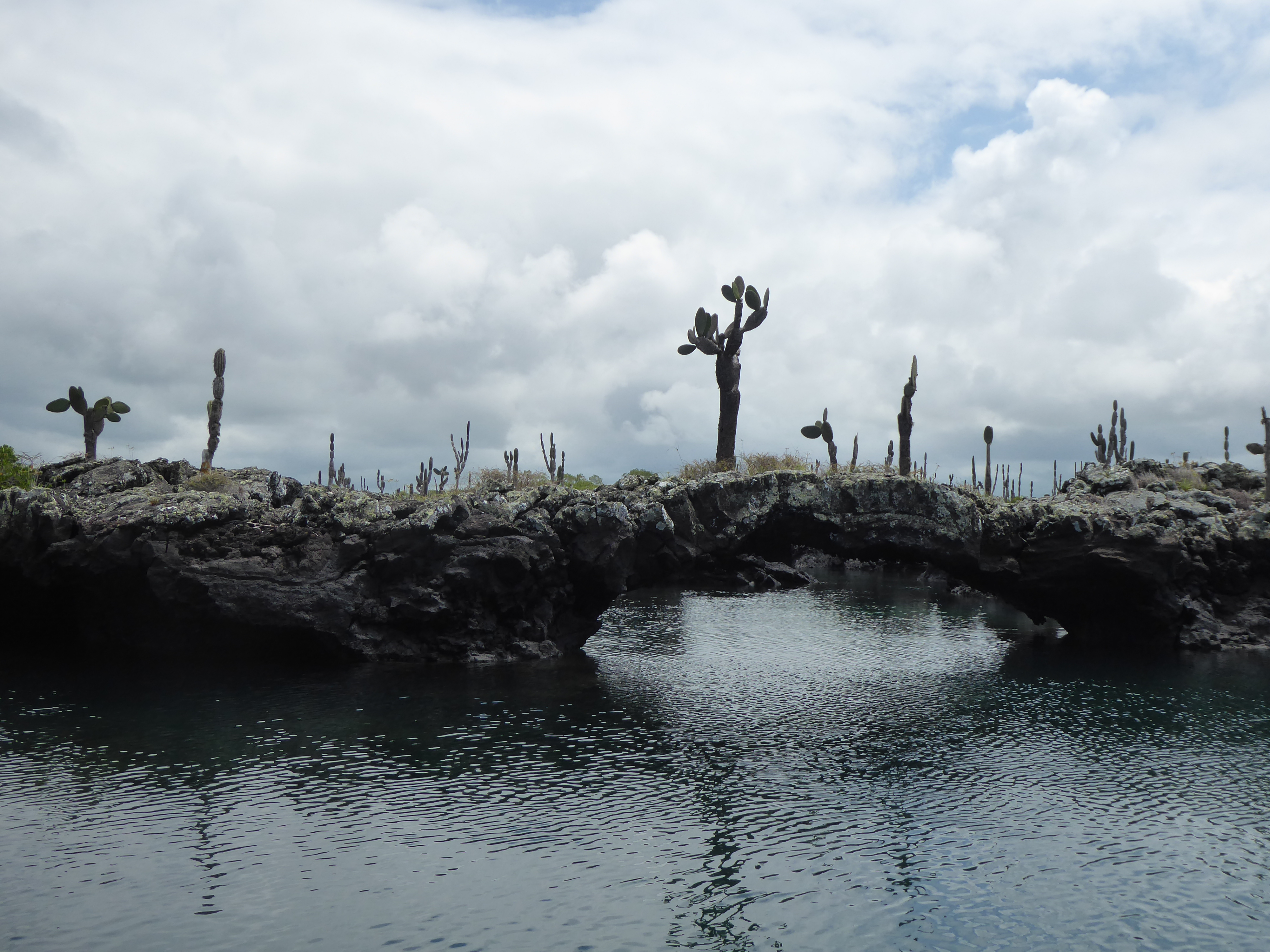 A forty-five minute boat ride to unusual land forms with cactus and pristine waters provided direct encounters with enormous (at least 5 feet long) sea turtles, white-tipped sharks of different sizes- fortunately not aggressive since I unknowingly wandered into their “den”-colorful tropical fish, one large seahorse (about 6 inches long) and more blue footed boobies.
A forty-five minute boat ride to unusual land forms with cactus and pristine waters provided direct encounters with enormous (at least 5 feet long) sea turtles, white-tipped sharks of different sizes- fortunately not aggressive since I unknowingly wandered into their “den”-colorful tropical fish, one large seahorse (about 6 inches long) and more blue footed boobies.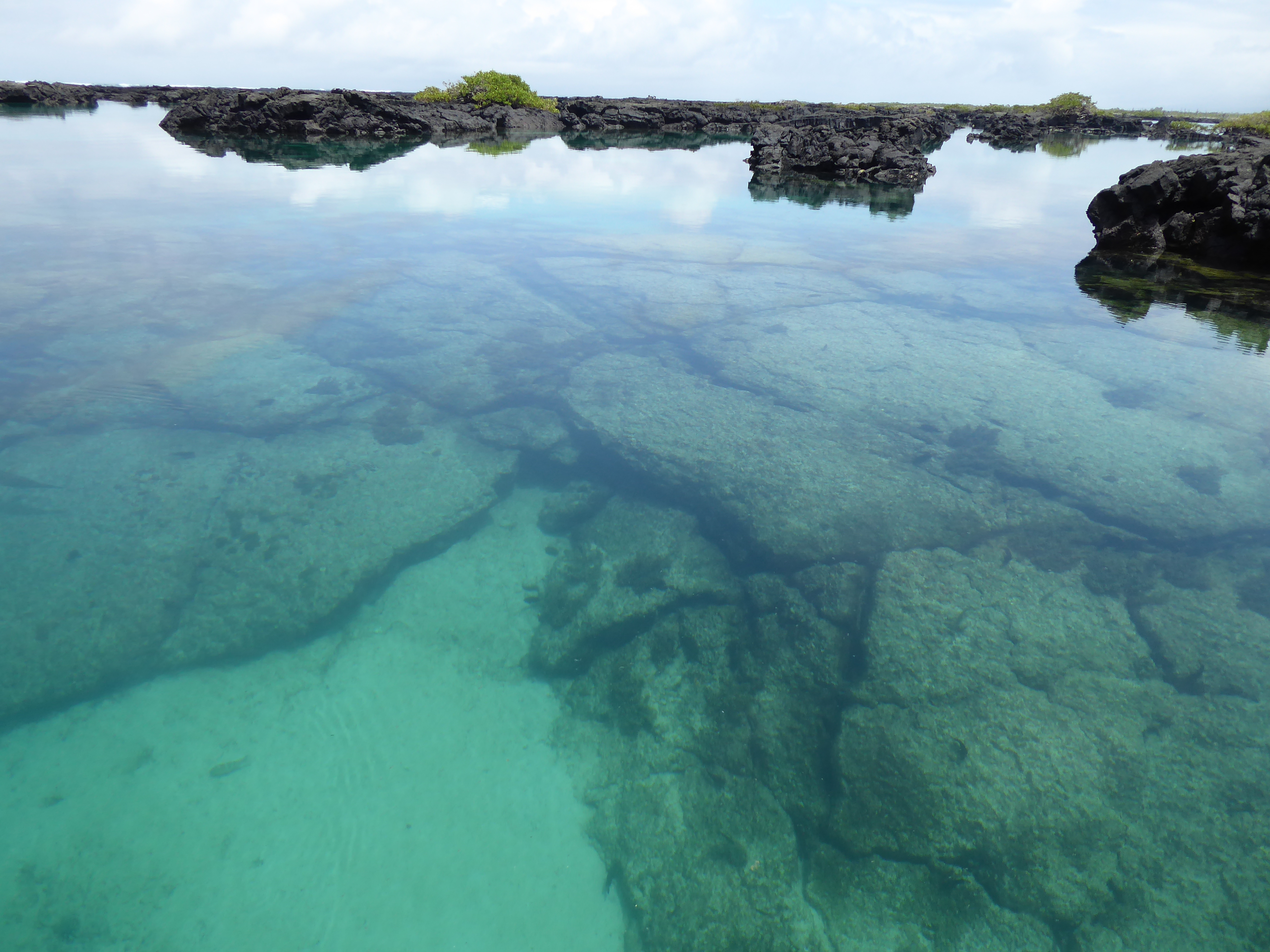
I was happy to spend the rest of the time investigating on my own. I rented a bike and rode along a rough unpaved road, sometimes deep in sand, to a National Park with El Muro de Lagrimas (Wall of Tears) a remnant from the cruel conditions of the penal colony . This massive stone wall, with no particular purpose, was built by prisoners starved and worked to death. Just getting there during the heat of the day was challenge enough.
The park also offered natural wonders. I wandered and swam within the mangroves, watched giant tortoises wander too, and sat along the surf once again entertained by iguanas, colorful crabs, and pelicans.
A highlight of my stay was snorkeling at the nearby Concha de Perla with some very social penguins! When they weren’t diving for sardines they seemed delighted to swim with me-and the other humans.
In the evenings I explored the town.
A priest was holding mass in a large modern church, off the main street. Galapagos creatures were depicted in the stained glass. There was one worshiper in attendance. Yet, I passed a few homes where parents squeezed onto sofas with their children and listened to enthusiastic sermons. These preachers were likely hoping for a larger venue to attract their flock.
There is a complete sense of security on the islands and I walked alone at night virtually carefree.( Dangers do lie in unlit, uneven, roads .)
Although greetings might me exchanged on the street, there was never any unwanted attention. I found the people overall very kind and helpful. My first evening I stepped into a shop to ask where the market was. The shop owner gave a worker $5. She told him to take me to the market and come back with some fruit. When we arrived, the man gave me a tour of the six stalls and their products although the offerings were few.
Blocks away from the main street and tourist shops the local life emerges: homes and shops are single story structures. Doors are left open to catch the sea breeze. Children ride bicycles or kick balls back and forth. Men and women sit outside quietly or socialize. Barbecues are set up for personal use and business.
The eateries served the typical fish, chicken with rice, lentils, french fries, salad, and fresh fruit juices/milkshakes of guanabana, maracuya, mora, guayaba, and the more familiar pineapple, coconut, and strawberry. All are delicious!
Dining entertainment, in the form of a TV, was often ultra violent films where I heard, but did my best not to watch, actors in dubbed voices suffering from various means of torture. The local viewers appeared engrossed.
On my last afternoon I scheduled a haircut and color with Dany from Quito in a sparse salon. He complained about his lack of supplies, but I left very happy with his efforts.
I bought a ticket for a lancha back to Santa Cruz for 3pm. My flight was leaving for Quito at 12:45pm the following day.
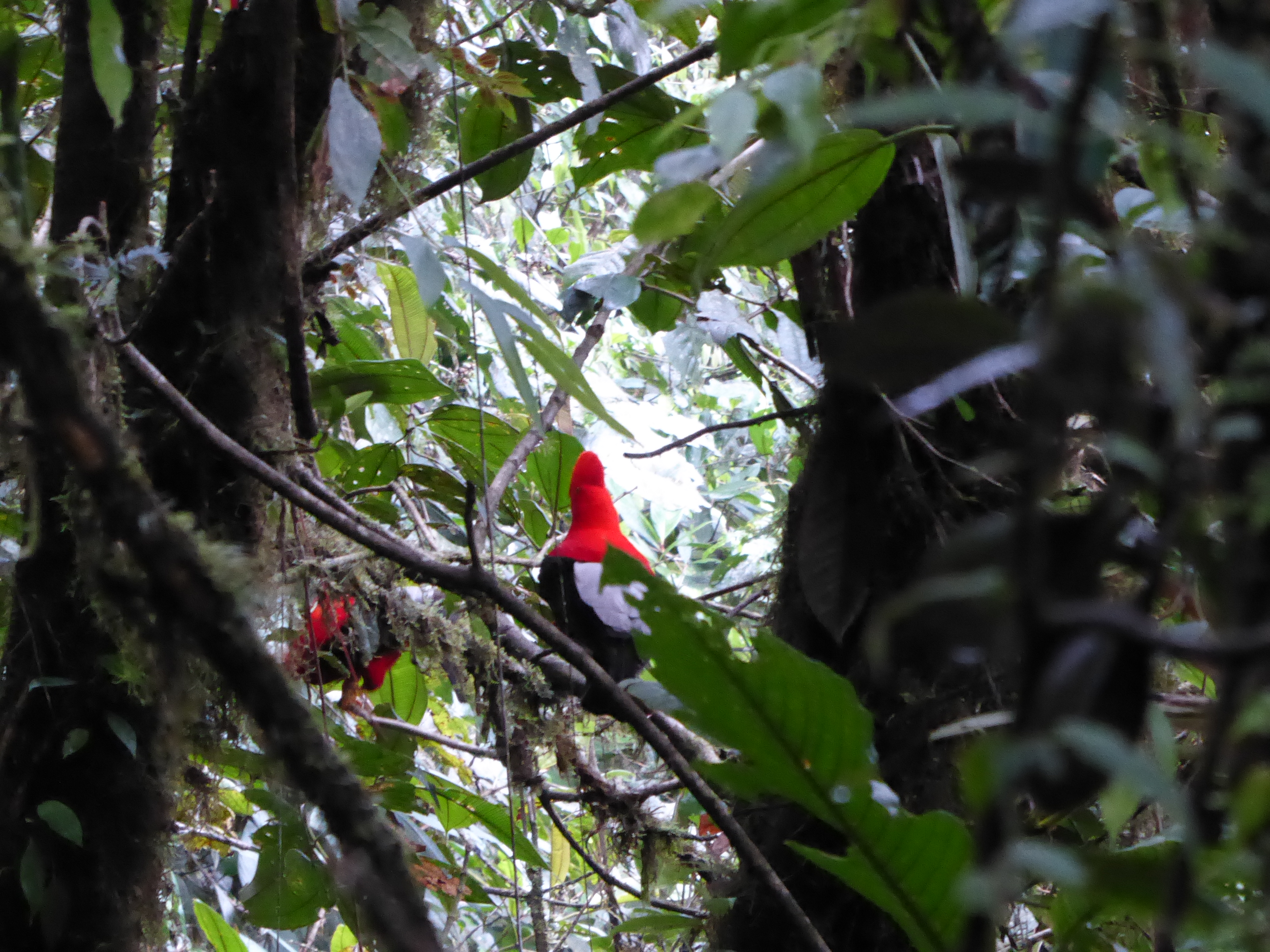 I had been drawn to Mindo for its array of birds, and since I was seeing nary a one, I was encouraged to hire a professional guide. Thus one morning at 5:20am I set off with Javier (guide) and Cesar (driver) to visit a “lek.” A lek is where male birds, in this case the brilliantly red headed cock-of-the-rocks, gather in the woods to gain the attention of a mate. The females will only come for a quick visit, if at all. Meanwhile the males squawk, preen, compete for a branch, flitter about and make a raucous time of it.
I had been drawn to Mindo for its array of birds, and since I was seeing nary a one, I was encouraged to hire a professional guide. Thus one morning at 5:20am I set off with Javier (guide) and Cesar (driver) to visit a “lek.” A lek is where male birds, in this case the brilliantly red headed cock-of-the-rocks, gather in the woods to gain the attention of a mate. The females will only come for a quick visit, if at all. Meanwhile the males squawk, preen, compete for a branch, flitter about and make a raucous time of it. 